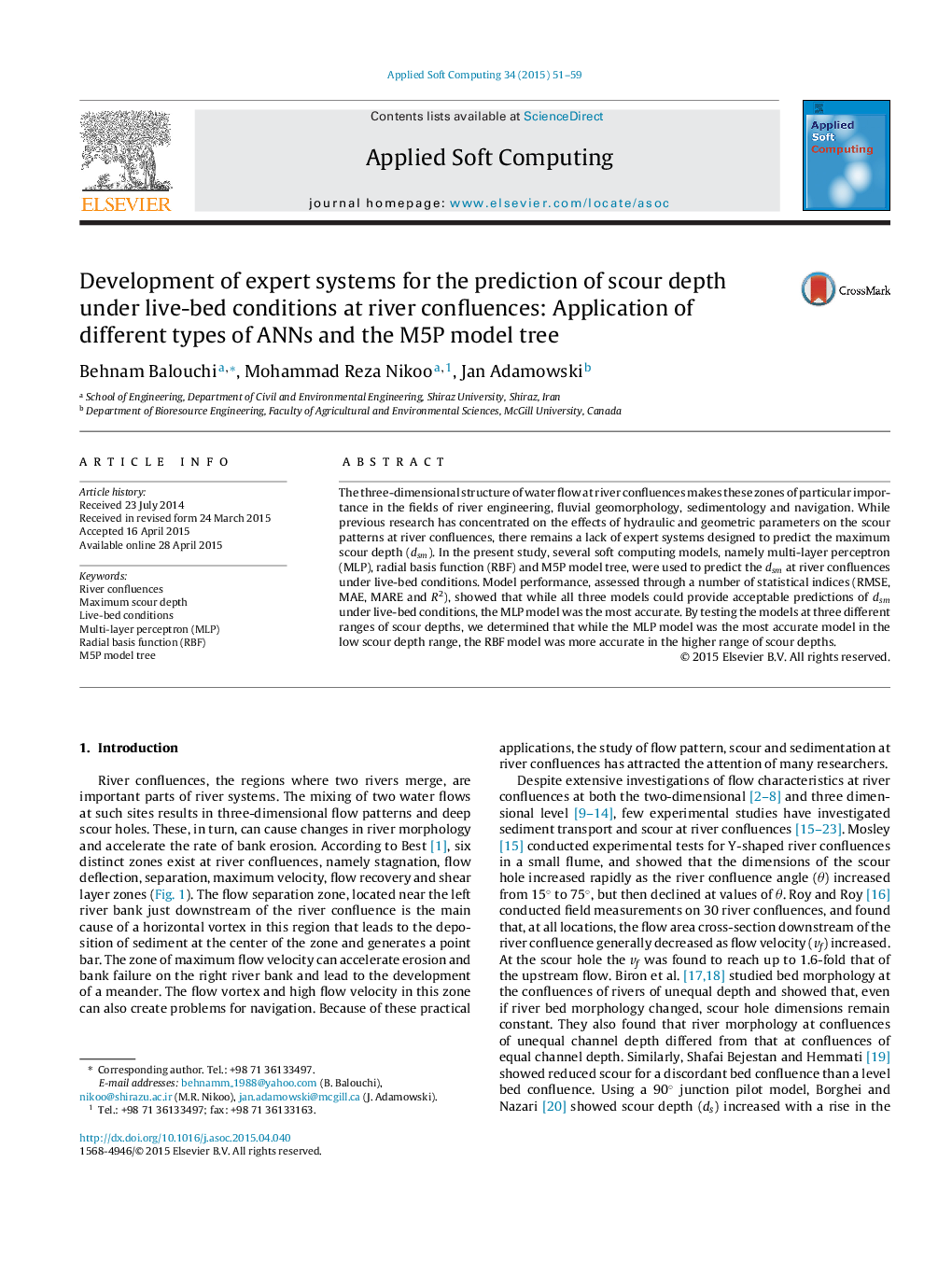| Article ID | Journal | Published Year | Pages | File Type |
|---|---|---|---|---|
| 494932 | Applied Soft Computing | 2015 | 9 Pages |
•This paper presents expert systems for predicting the maximum scour depth (SD).•The methodology is applied to river confluences under live-bed condition.•In this paper, MLP, RBF and M5P models are developed and compared to each other.•Results show that the MLP model can outperform other expert systems.•MLP and RBF are the most accurate models in the low and high SD, respectively.
The three-dimensional structure of water flow at river confluences makes these zones of particular importance in the fields of river engineering, fluvial geomorphology, sedimentology and navigation. While previous research has concentrated on the effects of hydraulic and geometric parameters on the scour patterns at river confluences, there remains a lack of expert systems designed to predict the maximum scour depth (dsm). In the present study, several soft computing models, namely multi-layer perceptron (MLP), radial basis function (RBF) and M5P model tree, were used to predict the dsm at river confluences under live-bed conditions. Model performance, assessed through a number of statistical indices (RMSE, MAE, MARE and R2), showed that while all three models could provide acceptable predictions of dsm under live-bed conditions, the MLP model was the most accurate. By testing the models at three different ranges of scour depths, we determined that while the MLP model was the most accurate model in the low scour depth range, the RBF model was more accurate in the higher range of scour depths.
Graphical abstractFigure optionsDownload full-size imageDownload as PowerPoint slide
